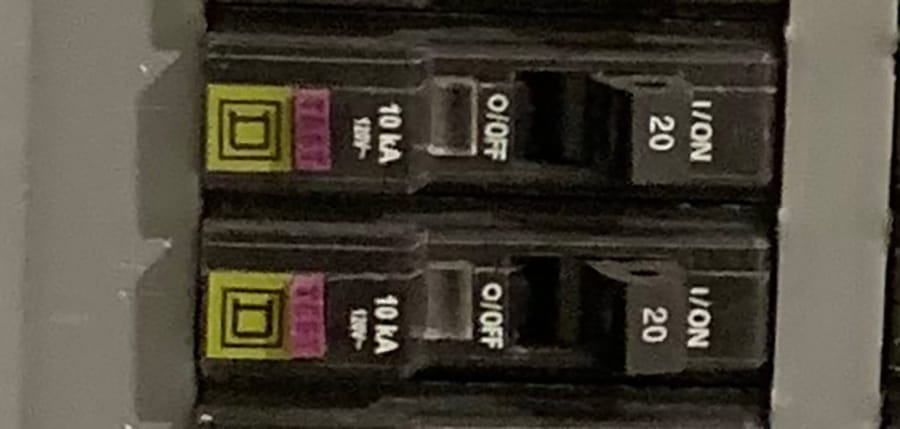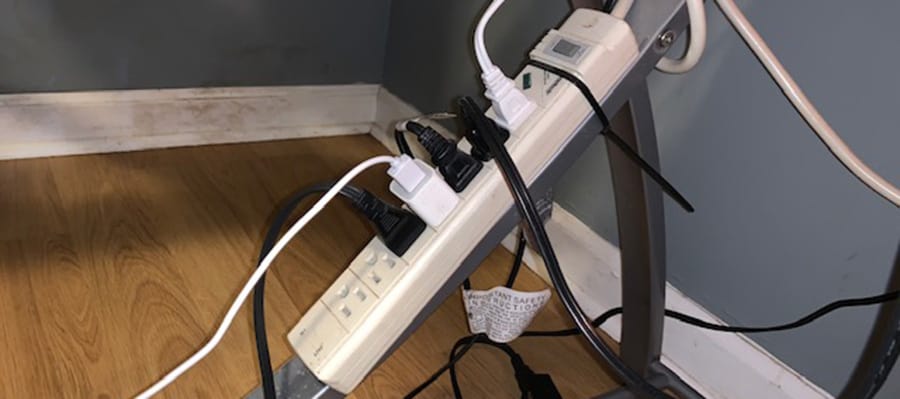
The electrical wiring systems within our homes can confuse those who have little knowledge about electricity. Some people might get confused about the difference between GFCI and surge protectors systems.
There is a difference between ground-fault circuit interrupters (GFCI) and surge protectors. GFCIs protect people from electric shock in wet areas like kitchens and bathrooms. In contrast, surge protectors guard appliances and electronics against sudden increases in voltage, i.e., voltage spikes.
It is essential to know that electrical systems have different components. Understanding this can help prevent hazardous situations from happening in your home. This article will teach you about the differences between GFCI and surge protectors. We will also give you an insight into whether the outlets in your home have surge protection.
Get FREE estimates from licensed electricians in your area today. Whether you need to replace an outlet, hang a ceiling fan, a new electrical panel, or repair wiring, We Can Help!
What is GFCI Protection?
Ground fault circuit interrupters (GFCI) offer protection against electric shock in areas like kitchens, bathrooms, and garages. A ground fault occurs when the electric current finds an alternate path to the ground. When electricity grounds itself through a person, serious injury or death can occur. GFCIs prevent this by cutting off the electric current when an imbalance occurs.
GFCIs cut off the electric supply to the outlet when varying incoming and outgoing current is detected to protect people against electrocution. GFCIs also trip when the outlet is in contact with water because water is a conductor of electricity. The main advantage of a GFCI is that it immediately cuts off the circuit when it senses a change in the electric current.
Electrical code requires GFCI protection in wet areas like kitchens, bathrooms, laundry rooms, garages, exteriors, etc. There are two main types of GFCI protection.
The first type is the GFCI outlets you see around your home. GFCI outlets provide shock protection near water, like bathrooms and kitchens. However, electrical panels can also have GFCI breakers installed to protect them.
The second type of GFCI is the GFCI breaker. GFCI circuit breakers protect all the outlets on that particular circuit. These circuit breakers are used in place of standard circuit breakers.
Many new homes now have combination breakers that provide GFCI and arc-fault circuit interrupter (AFCI) protection to meet recent electrical code changes.

What is Surge Protection?
Surge protection refers to the protection needed against voltage spikes, leading to damage to electronics and appliances. A surge protector may also be known as a surge suppressor or surge diverter as it limits the voltage supplied to a device.
Surge protectors prevent voltage spikes from reaching and damaging appliances and electronic devices. This surge in voltage is also called transient voltage or a power surge, and it can be caused by many different reasons, including a lightning strike that might hit a nearby power line. Voltage spikes up to 100,000 volts can cause severe damage to all the appliances plugged into the circuit.
The main reason why there is a need for surge protection is that a sudden increase in voltage can damage the wiring and internal circuitry of electronics and appliances. Surge protection is crucial as it protects your appliances and may increase their lifespan.
A surge protector power strip is the most recognized form of surge protection. Power strips allow outlets for several devices at once. A power strip with surge protection will sense the voltage being provided to the strip. If this voltage suddenly increases above suitable levels, the surge protector will divert the extra voltage towards the grounding wire present within the outlet.
This diversion of voltage allows the surge protector to be efficient in saving the electronics from damage caused by voltage spikes. However, it is essential to note that not all power strips are surge protectors. If you want to protect your electronics from voltage spikes, be sure to purchase a specific power strip designed to act as a surge protector well.

Do Outlets Have Surge Protection?
As much as surge protection is necessary, it is unfortunate that electric outlets within homes do not present surge protection. However, surge protectors are commonly available in stores or online and are often quite affordable. Thus, people frequently purchase these surge protectors to protect their electronics from voltage surges.
There are two main types of surge protectors available on the market, power strips and single-outlet protectors. Surge protectors in power strips are perhaps the most common way people combat voltage spikes. These strips allow outlets for multiple devices to be protected using just one power strip.
However, it is also important to remember that not all power strips offer surge protection, and specific strips provide protection. To identify a surge protector power strip, you will need to look for a Joules rating on the power strip itself or the box it came in. This rating shows the amount of voltage the surge protector will be able to protect against in case of a voltage spike. If there is no rating in Joule’s present on your power strip, then it is only a regular strip and will not protect your electronics against voltage surges.
Alongside power strips, single-outlet surge protectors are also available, which work by sitting against the outlet and protecting any electronics that you will plug into that particular outlet. Single-outlet surge protectors are helpful, but since it only protects one individual outlet, many people prefer using a surge protector power strip to protect many different appliances and electronics at once.
Regardless of which method of protection you choose, it is necessary to use a surge protector as voltage spikes can occur at any time and cause irreversible damage.
Surge protection is available for the whole house and installed by a licensed electrician. If you plan to use surge protection, this is the safest option for your entire home. I recommend the Siemens FS140 Whole House Surge Protection for a whole-house option.

Is GFCI a Surge Protector? Now You Know
Although we all are heavily dependent on electricity, most people have little knowledge regarding the correct and safe ways to utilize electricity. Due to the dangers involved with current and voltage, there are many ways we can protect ourselves and our regular-use electronics from being damaged.
One might confuse GFCI and a surge protector due to their similar nature, but it is vital to remember that GFCIs are necessary to protect ourselves from electrocution.
Simultaneously, surge protectors are needed to ensure that our appliances are safe from voltage spikes that can cause significant damage to their wires and internal circuits. Thus, GFCI and a surge protector are two completely different methods of using electricity safely.
Once the difference between them is clear, it is essential to ensure that you utilize these protective measures. These are crucial parts of your household’s electrical system and should be included in your home to be safer when using electric outlets.
Get FREE estimates from licensed electricians in your area today. Whether you need to replace an outlet, hang a ceiling fan, a new electrical panel, or repair wiring, We Can Help!








